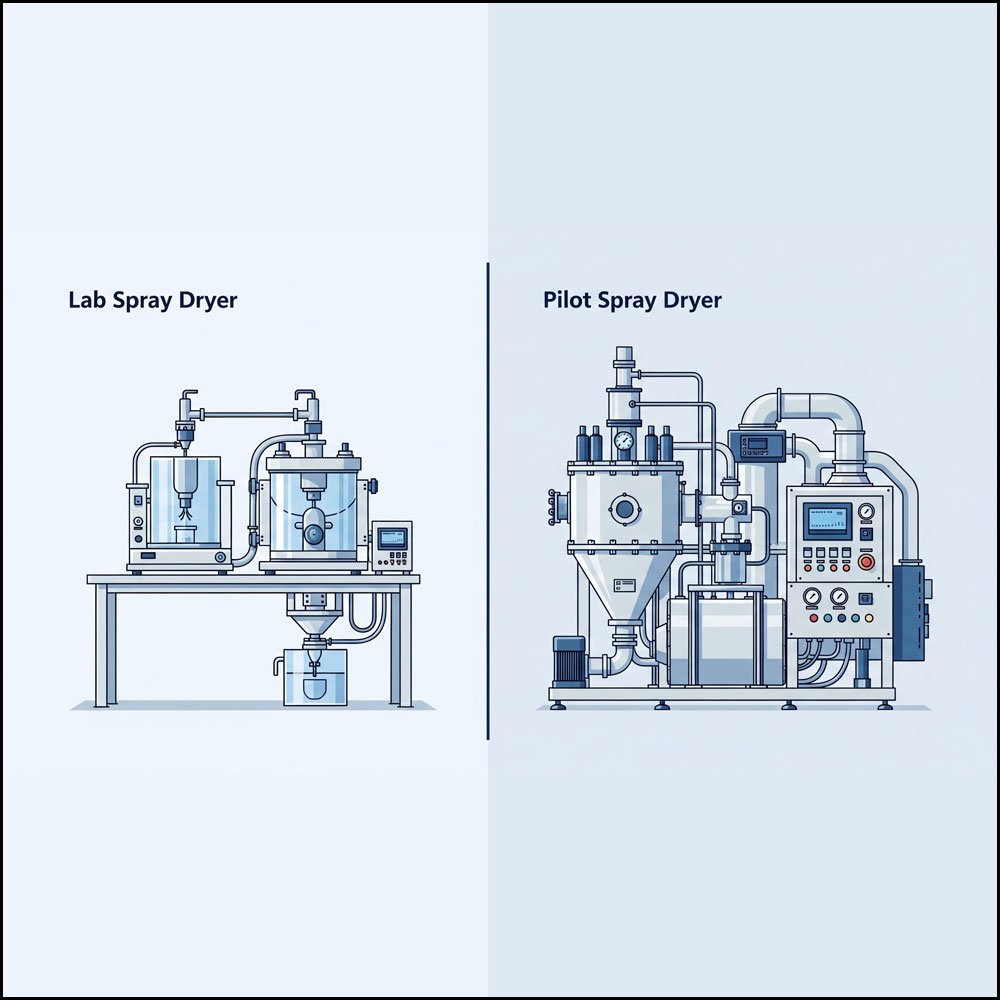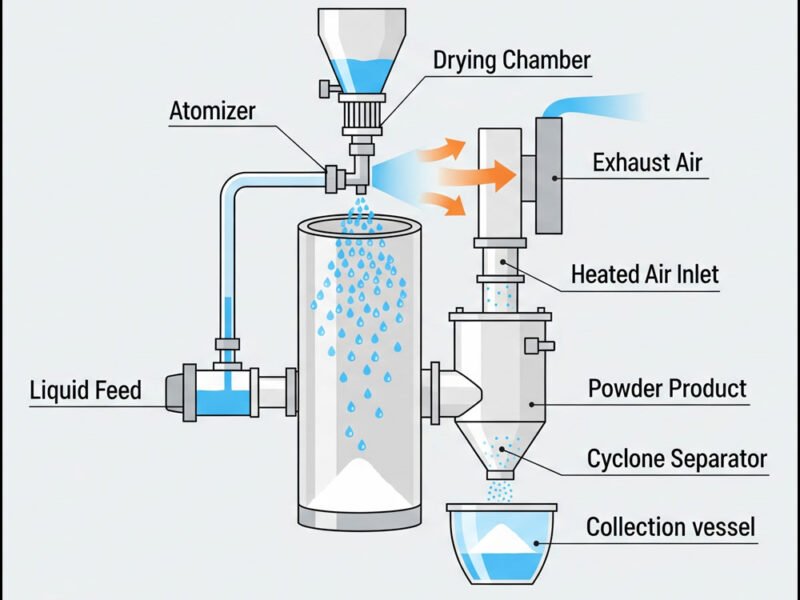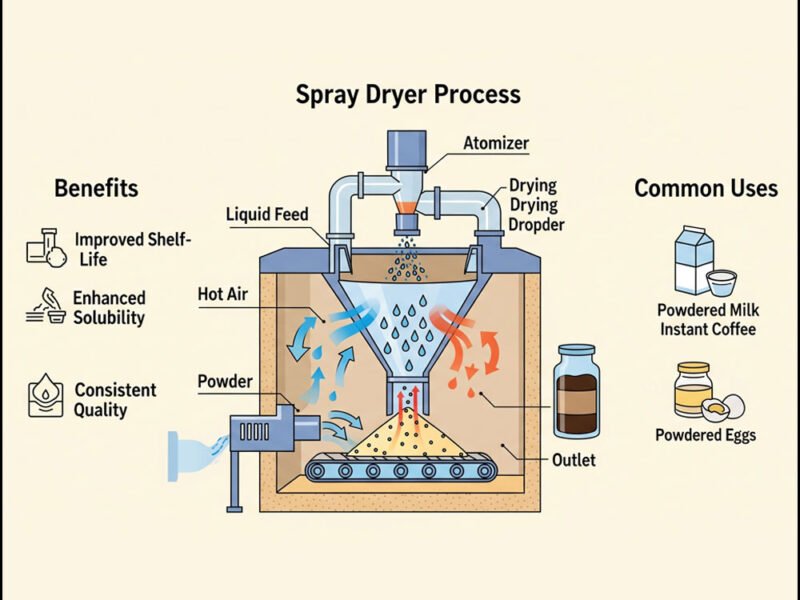A pilot spray dryer and a lab spray dryer differ primarily in their scale of operation and equipped features, designed to serve distinct purposes in product development and research.
Scale
- Lab Spray Dryer:
Lab-scale spray dryers are typically smaller, handling very small feed volumes ranging from a few milliliters to about 1-2 liters per hour. They are primarily used for preliminary research, formulation screening, and basic feasibility studies where only minute sample amounts are needed. - Pilot Spray Dryer:
Pilot spray dryers operate on a larger scale, processing feed volumes from a few liters up to tens of liters per hour. This intermediate scale is ideal for more extensive process optimization, product development, and generating data necessary for scaling up to industrial production.
Features and Capabilities
- Lab Spray Dryer:
- Simple and compact design for easy use and quick tests.
- Basic control over inlet temperature, feed rate, and atomization, often manually set.
- Limited instrumentation and automation.
- Suitable for rapid screening without extensive customization.
- Typically provides less precise control over drying parameters compared to larger units.
- Pilot Spray Dryer:
- More robust and versatile with enhanced controls for precise regulation of parameters such as temperature profiles, atomization pressure, airflow, and feed concentration.
- Higher degree of automation, data logging, and process monitoring for reproducibility.
- Designed for extended operation and testing under conditions resembling industrial settings.
- Includes features to handle specialized applications like inert atmosphere drying, closed-loop operation, and advanced atomizers.
- Facilitates formulation adjustments and troubleshooting with greater flexibility.
Summary
| Aspect | Lab Spray Dryer | Pilot Spray Dryer |
|---|---|---|
| Feed Volume | Milliliters to ~2 liters/hour | Several liters to tens of liters/hour |
| Purpose | Preliminary research, screening | Process optimization, scale-up data generation |
| Control and Automation | Basic manual controls | Advanced control, automation, and data logging |
| Operation Duration | Short runs for quick tests | Longer continuous operation |
| Complexity and Cost | Simpler, more affordable | More complex, higher investment |
| Application Flexibility | Limited | Broad, including industrial simulation |
In essence, lab spray dryers are suited for early-stage exploration, while pilot spray dryers provide a more comprehensive platform for development and scale-up, bridging lab work and commercial manufacturing.



